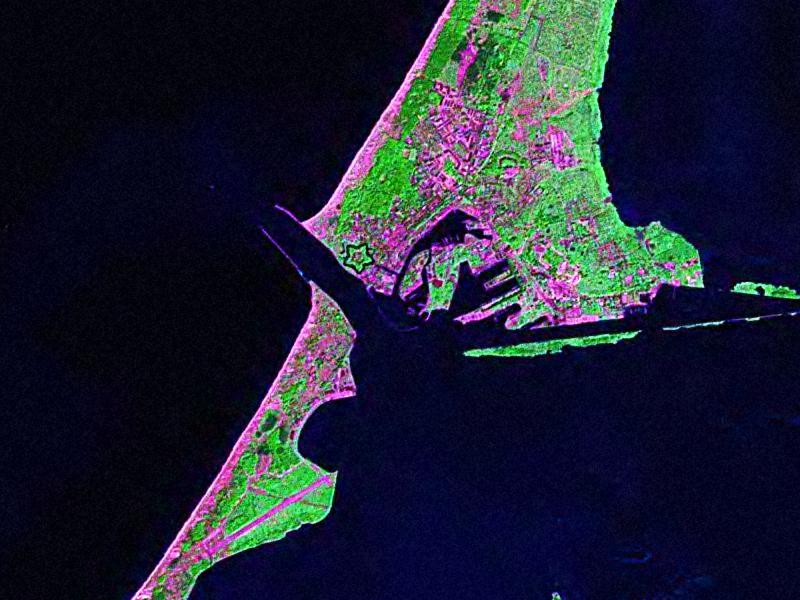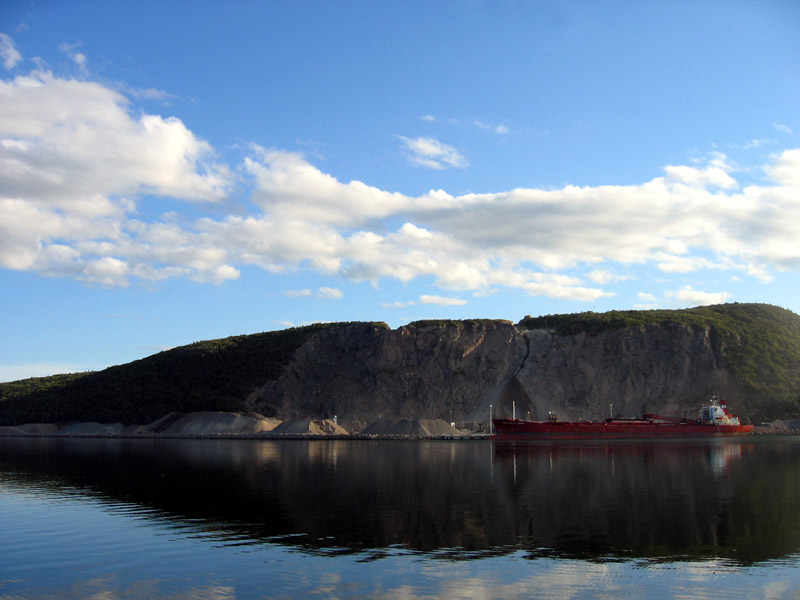|
Gat (landform)
A gat (german: Seegatt, ''Seegat'' or diminutive ''Gatje'') is a strait that is constantly eroded by currents flowing back and forth, such as tidal currents. It is usually a relatively narrow but deep, up to passage between land masses (such as an island and a peninsula) or shallow bars in an area of mudflats. A gat is sometimes a shallower passage on lagoon coasts, including those without any tidal range. According to Whittow a gat is either an inshore channel or strait dividing offshore islands from the mainland e.g. the Frisian Islands, or it is an opening in a line of sea cliffs allowing access to the coast from inland. It is similar, but not identical, to a gut, which is a narrow river channel or strait prior to joining an open ocean or estuary. Leser restricts its use to deep, but relatively narrow inlets in the Wadden Sea that are scoured out by currents, giving the example of the gap between the Frisian islands of Juist and Nordeney. Description The comparatively la ... [...More Info...] [...Related Items...] OR: [Wikipedia] [Google] [Baidu] |
Lagoon
A lagoon is a shallow body of water separated from a larger body of water by a narrow landform, such as reefs, barrier islands, barrier peninsulas, or isthmuses. Lagoons are commonly divided into ''coastal lagoons'' (or ''barrier lagoons'') and ''atoll lagoons''. They have also been identified as occurring on mixed-sand and gravel coastlines. There is an overlap between bodies of water classified as coastal lagoons and bodies of water classified as estuaries. Lagoons are common coastal features around many parts of the world. Definition and terminology Lagoons are shallow, often elongated bodies of water separated from a larger body of water by a shallow or exposed shoal, coral reef, or similar feature. Some authorities include fresh water bodies in the definition of "lagoon", while others explicitly restrict "lagoon" to bodies of water with some degree of salinity. The distinction between "lagoon" and "estuary" also varies between authorities. Richard A. Davis Jr. restrict ... [...More Info...] [...Related Items...] OR: [Wikipedia] [Google] [Baidu] |
Strait Of Baltiysk
The Strait of Baltiysk (russian: Балтийский пролив, pl, Cieśnina Piławska, german: Pillauer Tief) is a strait enabling passage from the Baltic Sea into the brackish Vistula Lagoon, located in Kaliningrad Oblast, Russia. The constructed strait separates the Sambian Peninsula and the Vistula Spit, and is at the northeastern side of the lagoon. Shipping The strait is the shipping connection from the open sea to the important Russian ports of Baltiysk and Kaliningrad in the northeastern lagoon, as well as to the Polish ports of Elbląg, Braniewo, Tolkmicko, Frombork, Sztutowo, Krynica Morska, and Nowa Pasłęka in the southeastern lagoon.What Changes will a Canal on the Vistula Spit br ... [...More Info...] [...Related Items...] OR: [Wikipedia] [Google] [Baidu] |
Regressive Delta
A regressive delta is a body of sediment that forms at the landward end of a gut. In contrast to river deltas, regressive deltas are not caused by fluvial sedimentation but by marine sedimentation. During storm events, sediment-bearing sea water is pressed through the gut into the adjacent lagoon. Sedimentation takes place immediately after the water has passed the gut because the velocity of the current strongly decreases. The surplus water will leave the lagoon at leeward guts. Well-known regressive deltas on the Baltic Sea coast are those of the Prerower Strom in northeast Germany and the Świna The Świna (; Pomeranian: ''Swina'') is a river in northwest Poland, between 2 and 4 km from the German border. It flows from Szczecin Lagoon to the Baltic Sea between the islands of Uznam and Wolin. It is a part of the Oder estuary, and car ... in northwest Poland. References {{Coastal geography Coastal geography ... [...More Info...] [...Related Items...] OR: [Wikipedia] [Google] [Baidu] |
Prerower Strom
The Prerower Strom, Prerow Strom at www.ostseeferieninfo.de. Retrieved 27 Jun 2019. or Prerowstrom is an arm of the in northeast Germany. It begins near the island of Schmidtbülten in the and winds its way through the countryside of the peninsula of , where it separates from the < ... [...More Info...] [...Related Items...] OR: [Wikipedia] [Google] [Baidu] |
Gut Of Canso
The Strait of Canso (also Gut of Canso or Canso Strait, also called Straits of Canceau or Canseaux until the early 20th century) is a strait located in the province of Nova Scotia, Canada. It divides the Nova Scotia peninsula from Cape Breton Island. It is a long thin channel approximately 27 kilometres long and averaging 3 kilometres wide (1 km at its narrowest). The strait connects Chedabucto Bay on the Atlantic Ocean to St. George's Bay on the Northumberland Strait, a sub basin of the Gulf of St. Lawrence. The strait is extremely deep (200+ feet) with two major communities at Port Hawkesbury on the eastern side facing Mulgrave on the western side, both ports. The strait is crossed by the Canso Causeway for vehicular and rail traffic, opened in 1955. The Canso Canal allows ships to pass through the causeway, and this can accommodate any vessel capable of transiting the St. Lawrence Seaway. An account of early settlement in the area is given in the letters of loc ... [...More Info...] [...Related Items...] OR: [Wikipedia] [Google] [Baidu] |
Hull Gut
Hull Gut is a gut (a narrow, naturally dredged deep-water channel) about half a mile wide and thirty-five feet deep, in Boston Harbor running between Pemberton Point in Hull and the East Head of Peddocks Island. Along with its sister channel, West Gut, which runs between the West Head of Peddocks Island and Hough's Neck in Quincy, Hull Gut forms the southern entrance to the Inner Harbor connecting it to Hingham Bay. To the north the gut intersects with the deep-water shipping lane Nantasket Roads. Strong cross-currents and often heavy traffic make the gut a dangerous waterway. The channel is used by oil tankers and other freighters bound for industries around the Weymouth Fore River in Braintree, Weymouth, and Quincy and, historically, was used by the shipbuilding industry Shipbuilding is the construction of ships and other floating vessels. It normally takes place in a specialized facility known as a shipyard. Shipbuilders, also called shipwrights, follow a specializ ... [...More Info...] [...Related Items...] OR: [Wikipedia] [Google] [Baidu] |
Digby Gut
The Digby Gut is a narrow channel connecting the Bay of Fundy with the Annapolis Basin. The town of Digby, Nova Scotia is located on the inner portion of the western side of the Gut. The eastern entrance is marked by the Point Prim Lighthouse. Strong tidal currents, numerous rocky ledges, frequent fogs and unpredictable winds make it a dangerous passage requiring a pilot or local knowledge. Tide flows create 5 knot tidal currents and create numerous whirlpools and eddies. The gut is about a half nautical mile in width and bordered by high rocky cliffs. It marks a break in the North Mountain ridge along the Annapolis Valley and is the eastern end of Digby Neck. Digby Gut had its origins as the northern terminus of the ancient Bear River, part of which is now a drowned river valley. Digby Gut is overlooked by the Digby Pines Resort and has been used daily for many years by Digby- Saint John ferries such as the SS ''Princess Helene'' and MV ''Princess of Acadia''. The famous poe ... [...More Info...] [...Related Items...] OR: [Wikipedia] [Google] [Baidu] |
Fisherman's Gat
Fisherman's Gat is a much-deepened channel in the North Sea, between the final long line of shoals loosely associated with the Thames Estuary. UK Hydrography Office. 2005. Accessed 18 July 2008. The channel cuts across Long Sand. In the west it opens onto the nominal cut-off point of Knock Deep (north) or the Princes Channel (south) which links to the Strait of Dover. In the west it opens to |
Veerse Gat
The Veerse Gat or Veeregat was the sea channel between Walcheren and Noord-Beveland islands in Zeeland in the Netherlands. In 1961 as part of the Delta Plan it was blocked off by the Veerse Gatdam and made into an inland lake called Veerse Meer The Veerse Meer (Lake Veere) is a lagoon in the southwest Netherlands in the province of Zeeland. Description The Veerse Meer was created as a flood control measure to regulate water levels in the surrounding polders, acting as a drainage basin f .... References Bodies of water of the Netherlands Channels of Europe Delta Works History of Zeeland Goes Middelburg, Zeeland Noord-Beveland Veere {{Zeeland-geo-stub ... [...More Info...] [...Related Items...] OR: [Wikipedia] [Google] [Baidu] |
Kattegat
The Kattegat (; sv, Kattegatt ) is a sea area bounded by the Jutlandic peninsula in the west, the Danish Straits islands of Denmark and the Baltic Sea to the south and the provinces of Bohuslän, Västergötland, Halland and Skåne in Sweden in the east. The Baltic Sea drains into the Kattegat through the Danish Straits. The sea area is a continuation of the Skagerrak and may be seen as a bay of the North Sea, but in traditional Scandinavian usage, this is not the case. The Kattegat is a rather shallow sea and can be very difficult and dangerous to navigate because of the many sandy and stony reefs and tricky currents, which often shift. In modern times, artificial seabed channels have been dug, many reefs have been dredged by either sand pumping or stone fishing, and a well-developed light signaling network has been installed, to safeguard the very heavy international traffic of this small sea. There are several large cities and major ports in the Kattegat, including, in d ... [...More Info...] [...Related Items...] OR: [Wikipedia] [Google] [Baidu] |
.png)





